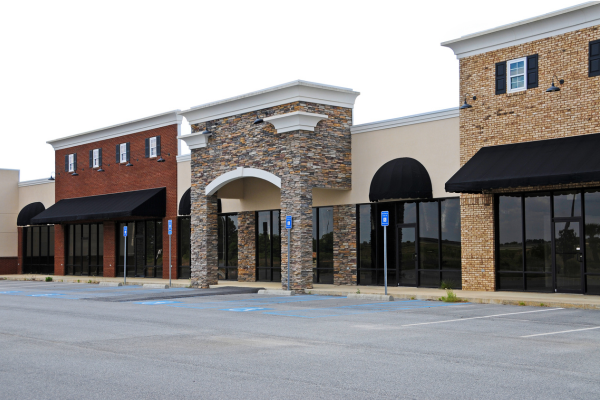When it comes to selecting paint colors for your home or business, the choices go far beyond simple aesthetics. The colors you choose can profoundly impact the mood, behavior, and perceptions of anyone who enters the space. Whether you’re a homeowner looking to create a serene environment or a business owner aiming to attract and retain customers, understanding the psychological effects of color is essential.
Understanding the Basics: Warm, Cool, and Neutral Colors for Your Business
Warm Colors
Warm colors such as red, orange, and yellow are often associated with energy, warmth, and positivity. These colors evoke emotions connected to the sun and heat, making spaces feel more vibrant and alive. For businesses, warm colors can draw attention and encourage quick action, which is why they’re often used in fast-food restaurants to stimulate appetite and create a sense of urgency.
Cool Colors
On the other end of the spectrum, cool colors like blue, green, and purple are linked to calmness, tranquility, and relaxation. These colors are reminiscent of water, sky, and nature, which is why they’re popular in spaces meant for rest and rejuvenation, such as bedrooms and bathrooms. In a business setting, cool colors can create a sense of trust and professionalism, making them ideal for offices or healthcare facilities.
Neutral Colors
Neutral colors, including white, black, gray, and earth tones like beige, offer versatility and stability. These colors serve as a backdrop that allows other elements in the space to stand out. While often considered inoffensive and easy to work with, neutral colors still carry psychological weight. White, for example, is associated with cleanliness and simplicity, while black can signify power and sophistication, albeit with a risk of feeling overwhelming if overused.
Cultural Context: How Color Perception Varies Globally
Color meanings can shift dramatically depending on cultural context. In Western cultures, white is typically seen as a symbol of purity and goodness, while black is associated with mourning. However, in some Eastern cultures, these associations are reversed, with white representing mourning and black symbolizing purity. Understanding these cultural nuances is particularly important for businesses that operate internationally or cater to a diverse clientele.
Strategic Use of Color in Business Settings
Fast-Food Restaurants: Red and Yellow
Fast-food chains like McDonald’s are masters of color psychology, using red and yellow in their branding and interior design to create a specific customer experience. Red grabs attention and increases heart rates, subtly encouraging customers to eat quickly and leave, which is ideal for a high-turnover environment. Yellow adds a touch of optimism and happiness, making the overall experience more enjoyable, even if it’s brief.
Offices and Corporate Spaces: Blue and Green
For office spaces, blue and green are often the go-to colors due to their calming and stabilizing effects. Blue is known to boost productivity and focus, while green, with its associations with nature and growth, creates a refreshing and stress-free environment. These colors are especially beneficial in high-pressure work environments where maintaining a calm and focused atmosphere is crucial.
Retail and Showrooms: The Power of Accent Walls
In retail settings, color can be used strategically to highlight specific areas or products. Accent walls—where one wall is painted a different color from the others—are a popular technique. A bold red wall in an otherwise neutral space can draw attention to a display, while a calming blue can guide customers through a more relaxed shopping experience. This technique can also be applied in showrooms to create focal points that naturally guide customer attention.
Home Interiors: Creating the Right Ambiance
Bedrooms: Calming Blues and Greens
In residential settings, color choice is often driven by the desired ambiance of a room. Bedrooms, for example, are spaces where calm and relaxation are paramount, making blues and greens popular choices. However, it’s essential to choose the right shade—while soft blues can be soothing, darker shades might evoke feelings of sadness or coldness.
Living Rooms: Balancing Warmth and Comfort
Living rooms serve as gathering spaces for family and guests, so the color palette should strike a balance between warmth and comfort. Earthy tones, such as beige or taupe, can create a welcoming environment, while accent colors like rust or terracotta add a touch of coziness. For those who prefer a more modern look, gray combined with pops of vibrant color can provide a stylish yet comfortable setting.
Tips for Choosing the Perfect Paint Color
Choosing the right paint color can be daunting, but a few tips can make the process easier:
- Test Before You Commit: Always test a small area before committing to a color. Lighting can significantly affect how a color looks in a space.
- Consider the Furniture: Make sure the wall color complements your furniture and decor. A cohesive color scheme can tie a room together.
- Don’t Be Afraid to Consult Experts: If you’re unsure about your choices, consulting with a professional painter or interior designer can provide valuable insights and save you from costly mistakes.
- Use Color to Create Focal Points: If you’re hesitant to paint an entire room in a bold color, consider using it on just one wall to create a focal point. This approach adds interest without overwhelming the space.
The Strategic Power of Paint: Start Influencing Mood and Behavior in Homes and Businesses
Paint color is more than just a decorative choice—it’s a powerful tool that can influence mood, behavior, and perception in both residential and commercial spaces. By understanding the psychology of color and strategically applying it, you can create environments that not only look great but also serve specific functional purposes, whether that’s boosting productivity, creating a sense of calm, or encouraging quick service.






